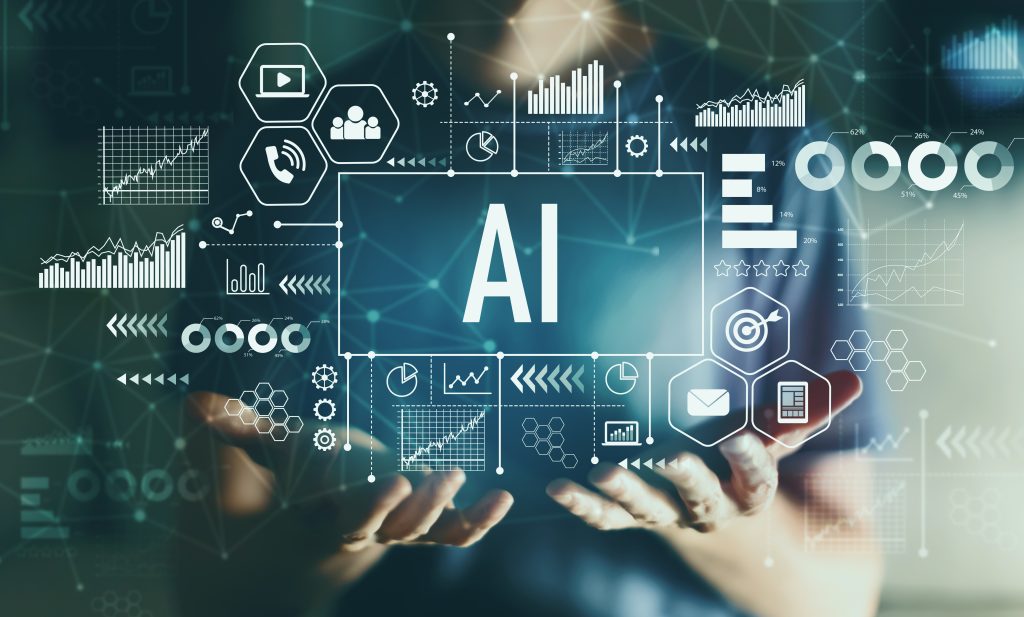
The impact of artificial intelligence on legal professionals in the financial industry
The use and development of artificial intelligence (AI) has increased importantly in particular over the last ten years and now is a hot topic in almost all sectors.
AI, which can be understood as “the ability that a machine can have in order to perform a task that is normally associated with human intelligence” (for example learning or problem-solving), has also started being applied in the financial sector for, amongst other things, commercial and legal purposes.
In this article, we are going to explain which impact AI has in the financial sector at the moment and, in particular how AI tools are or can be used by legal professionals in this industry.
How is AI being used in the financial industry for commercial purposes?
The implementation of AI technology by entities of the financial sector has already started, mainly in relation to the following activities:
Risk assessment and risk management: financial institutions use machine learning algorithms to carry out risk assessment activities, such as assessing and determining the eligibility of a borrower for a loan. This will follow the institution’s internal policy with respect to credit approval and is aimed at making the process more efficient. Banks are required to have detailed and specific policies around credit risk and onboarding of customers. Banks are also using AI tools in order to identify risks in a more efficient and accurate manner, allowing them, to a certain extent, to anticipate a default on loans or preventing potential cyberattacks.
Fraud detection: AI tools have been developed to analyse the behaviour of clients and detect anything that would be abnormal or contradictory to the traditional patterns of a client and trigger an internal alert. This is particularly important considering the increasingly burdensome AML/TF obligations.
Algorithmic trading: the use of AI tools is also being developed in terms of (i) analysis of large data sets of market patterns and developing algorithms that can help to predict how the markets will evolve and (ii) expenditure of the trading related tasks, so it simplifies the activity and makes it faster. Algorithmic trading is something that has been subject to regulation and monitoring, in particular since the introduction of MiFID II.
How is AI being used by legal professionals in the financial industry?
AI technology can be used by legal professionals in the financial industry in different manners:
Amongst the multiple uses that these tools can have, the ones that are starting to have the biggest impact are the automatic generation of agreements based on templates as well as the use of smart legal contracts (which, depending on its specificity, can be enforced automatically), the research of case law through large language model programs, the instant translation of documentation or even the management of correspondence with different clients.
The automation of these tasks can allow legal professionals to focus on other tasks with more added value or requiring more personal assessment and/or input.
AI tools are also expanding into the field of taxation. Automation of the collection, the sorting and the analysis of financial data has already significantly improved the realisation of repetitive but mandatory tasks for tax compliance and tax reporting processes. By way of example, automation tools are used more and more for the preparation of tax returns but also for the issuance of the different types of transfer pricing analysis.

AI tools are also expected to be increasingly used for tax audit purposes, and more particularly by the tax authorities. We see the authorities embracing this technology and expect them to use it more and more to check the accuracy and the correctness of the information provided by taxpayers, so that AI would be an additional tool in their armour to prevent tax evasion and tax fraud.
However, AI may find its limits in the legal field. Law and taxation is require analysis and interpretation of the relevant laws and applying them to the specific facts. This may therefore may seem difficult to implement in practice. Use of legal databases is a first step but the realisation of an entire tax analysis or tax optimisation (without falling within the scope of tax avoidance) or issuing legal opinions on various topics, the capacity to highlight recommendations and points of attention seem not be replaceable by such AI tools.
Risks associated to the use of AI tools
The use of AI tools for legal matters, while being an opportunity, requires the monitoring of the following proven risks:
Lack of accuracy of the information: most of the existing AI tools use information available as at the date of the last version of the software or program, which can lead to outdated information and thus to errors.
Problems of identification of the sources: since the current versions of AI tools cross-reference information from different sources and compile it to provide a consolidated outcome, it is difficult to ensure the accuracy and the reliability of the information received.
Hallucinations of the program or invention of information: it has been noticed that the AI tools may provide invented information. This is also an obstacle to the reliability of the tool with regards to the nature of the information gathered.
Confidentially: taking into account that there is a large number of AI tools publicly available, legal professionals that use them need to be vigilant and avoid sharing involuntarily personal or private information in these public tools. This could constitute a breach of law and especially for lawyers regarding their legal duty of confidentiality.
Consumer protection: financial institutions that use AI tools with consumers need to be extremely careful with being compliant with consumers regulations, in particular in relation to the required transparency of the credit institution and consumers’ specific rights.
How is AI transforming the legal profession in the financial industry?
AI tools already started to have a significant impact on the financial sector as well as practical implications for our practices within the firm. As our clients become more and more interested in this topic we help them navigate the legal and regulatory risks this entails. It should be highlighted that this new technology has limitations and lawyers will continue to play a crucial role in verifying the accuracy and the compliance of the information provided by the AI tools. What we do see is many lawyers learning to adapt themselves to this evolutionary landscape and get the appropriate technological education. This is also important to be able to understand how our clients operate.
Legislators are also reacting to this new trend and the European Commission, as part of its digital strategy, proposed the first EU regulatory framework for AI in April 2021. The proposal, known as the AI Act, focuses primarily on strengthening rules around data quality, transparency, human oversight and accountability. Earlier this summer the proposal was adopted by the European Parliament and the Member States hope to agree on the text by the end of 2023.
In our view, AI does not mean the end of the legal profession and replacing lawyers with robots, but rather a means to more effective and efficient actions for clients. In the meantime we will continue to advise our clients on these developments.
Authors


Julie Carbiener
Partner
Simmons & Simmons Luxembourg LLP

Camille Benezet
Managing Associate
Simmons & Simmons Luxembourg LLP



